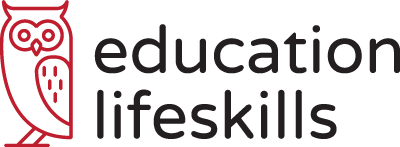The HIDDEN Opportunity In Student Discipline
5 Simple Steps to Wise and Just Discipline Decisions
As a result of the growing body of research, many schools and districts have responded to the call for change. They have begun to discard zero tolerance discipline practices, work to increase cultural responsiveness, and put into place Restorative Practices and other productive strategies to intervene with the at-risk students on their campuses. Restorative Practices can be loosely defined as any effort or practice on a school campus that is designed to create healthy learning communities by proactively building positive relationships to address conflict and misbehavior through skill-building, accountability, and empowerment of the involved parties.
Step 1: Heart Check
The Real Starting Point of the Discipline Process
A Heart-Check consists of the educator taking inventory of their deep-seated attitudes and views. How do they see the key elements of the situation — the misbehavior, the misbehaver, and the victim?
This step consists of the educator checking their own biases toward any party involved in the discipline incident. It also involves giving the initial gut reaction some time to settle and some room to breathe. Most importantly, in the words of the philosopher C. Terry Warner (2001). “There is no better means of promoting another person’s change of heart than allowing our own heart to be changed.”
A Heart-Check consists of the educator taking inventory of their deep-seated attitudes and views. How do they see the key elements of the situation — the misbehavior, the misbehaver, and the victim?
This step consists of the educator checking their own biases toward any party involved in the discipline incident. It also involves giving the initial gut reaction some time to settle and some room to breathe. Most importantly, in the words of the philosopher C. Terry Warner (2001). “There is no better means of promoting another person’s change of heart than allowing our own heart to be changed.”
Step 2: Information Gathering
Four Important Questions For Uncovering the Truth
Trying to gather all of the information regarding a particular discipline incident can be time-consuming and challenging. However, just as it is short-sighted to make decisions about curriculum or personnel based on gut feelings and preconceived notions, it is harmful to make discipline decisions with incomplete or inaccurate information. It is worth the time and effort to ensure you gather all the accurate, relevant information needed to make wise and just decisions.
How then can we gather unbiased and useful information when investigating a discipline matter? At times like these, the “4 W’s” can be extremely helpful. They are, of course — Who, What, When, and Where. These questions allow you to focus on the facts and eyewitness accounts and avoid the pitfalls of leading questions and assumptions.
Trying to gather all of the information regarding a particular discipline incident can be time-consuming and challenging. However, just as it is short-sighted to make decisions about curriculum or personnel based on gut feelings and preconceived notions, it is harmful to make discipline decisions with incomplete or inaccurate information. It is worth the time and effort to ensure you gather all the accurate, relevant information needed to make wise and just decisions.
How then can we gather unbiased and useful information when investigating a discipline matter? At times like these, the “4 W’s” can be extremely helpful. They are, of course — Who, What, When, and Where. These questions allow you to focus on the facts and eyewitness accounts and avoid the pitfalls of leading questions and assumptions.
Step 3: Draw out Context, Determine Function of Behavior
Reading Between, Around, and Under the Lines
This is separate from gathering facts and information because it is often found “between the lines” and not spoken explicitly. In this step you examine both the dynamics of the situation and the relationships between the offenders, victims, and bystanders.
Unfortunately, many educators focus primarily on the superficial events of the situation, rarely excavating the details and getting to the Why and the How of the situation. For that reason it is being treated as its own element in this five step process.
This is separate from gathering facts and information because it is often found “between the lines” and not spoken explicitly. In this step you examine both the dynamics of the situation and the relationships between the offenders, victims, and bystanders.
Unfortunately, many educators focus primarily on the superficial events of the situation, rarely excavating the details and getting to the Why and the How of the situation. For that reason it is being treated as its own element in this five step process.
Step 4: Evaluate
Effective Interventions and Consequences
#4: Evaluate the possible interventions and consequences and choose those that will bring about the best outcome for all parties involved. The vast majority of schools and districts in the nation have hard and fast rules that govern the consequences of every possible student infraction. At their worst, these discipline matrices handcuff administrators and teachers when responding to discipline incidents. This lack of flexibility can make it nearly impossible to implement a restorative intervention.
Many discipline policies mandate traditional consequences including after-school detention, lunch detention, in-school suspension, out-of-school suspension, referral to an alternative school, and even expulsion. Often these consequences do not serve any purpose outside of the offender “doing their time” by removing them from their normal instructional setting. There is no research available that supports the use of these traditional discipline approaches as a mechanism to bring about behavioral or cognitive change.
#4: Evaluate the possible interventions and consequences and choose those that will bring about the best outcome for all parties involved. The vast majority of schools and districts in the nation have hard and fast rules that govern the consequences of every possible student infraction. At their worst, these discipline matrices handcuff administrators and teachers when responding to discipline incidents. This lack of flexibility can make it nearly impossible to implement a restorative intervention.
Many discipline policies mandate traditional consequences including after-school detention, lunch detention, in-school suspension, out-of-school suspension, referral to an alternative school, and even expulsion. Often these consequences do not serve any purpose outside of the offender “doing their time” by removing them from their normal instructional setting. There is no research available that supports the use of these traditional discipline approaches as a mechanism to bring about behavioral or cognitive change.
Meeting the Needs of Students, Families, and Staff
#5: Make sure the intervention and consequences provide for the Needs of the students and families involved. It is easy to get sucked into the trap of focusing solely on the needs of the school and institution. While these must be considered, it is critical that the needs of the students and families become paramount in the decision-making process.
At a very basic level, the needs of the students and families are two-fold: restoring relationships that have been fractured and repairing the harm that has been inflicted. The needs that manifest themselves throughout this process, however, may become even more apparent and important than the original intended purpose of the discipline meeting and intervention. Throughout the entire process, the discovery of the students’ needs must be at the center of everything the educator does. These needs will only become apparent as the educators are aware, engaged, and mindful.
At a very basic level, the needs of the students and families are two-fold: restoring relationships that have been fractured and repairing the harm that has been inflicted. The needs that manifest themselves throughout this process, however, may become even more apparent and important than the original intended purpose of the discipline meeting and intervention. Throughout the entire process, the discovery of the students’ needs must be at the center of everything the educator does. These needs will only become apparent as the educators are aware, engaged, and mindful.

